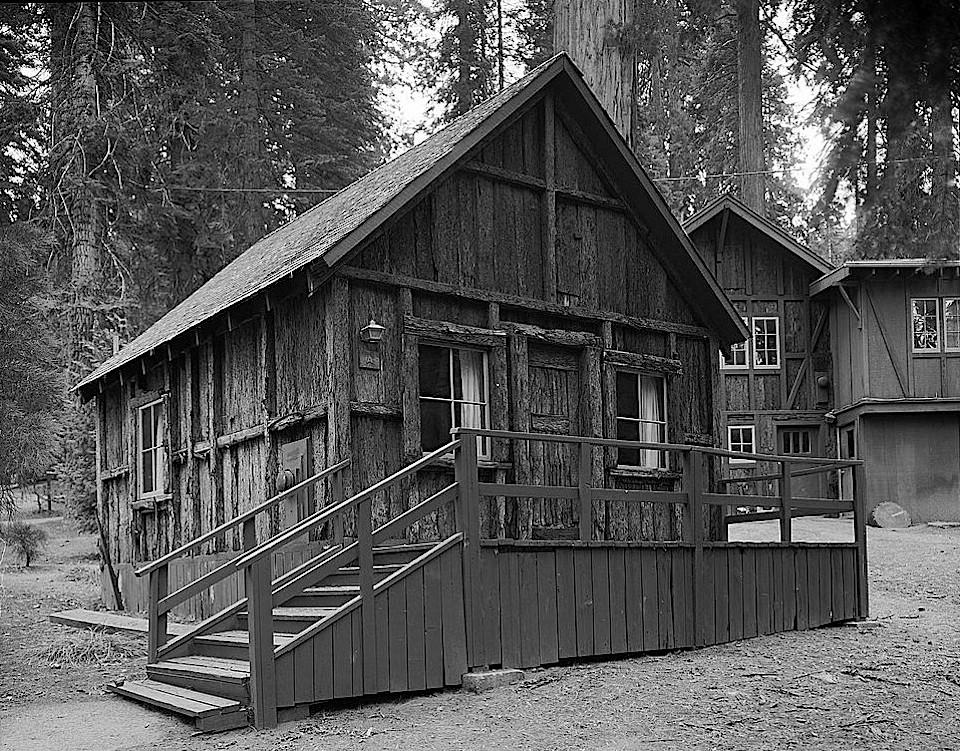
Standing no more: a Giant Forest Lodge cabin in Sequoia National Park/NPS
After nearly three decades of visiting America’s national parks in a series of four VW vans, it wasn’t until the summer of 1996 that we became acquainted with the lodges. The trip was designed to visit and stay in as many of the national park lodges as possible while gathering information and photos for a book we were to write for the Globe Pequot Press.
The trip’s first surprise occurred following a one-night stay in Sequoia National Park’s Giant Forest Lodge. We had visited the park on a number of occasions, but this was our first overnight stay in the lodge, which was in obvious need of some serious TLC. Following breakfast in the restaurant across the road we encountered a NPS ranger who mentioned the lodge was scheduled for permanent closure at season’s end. She commented the closing was related to environmental issues. It became clear why the lodge was in such shabby condition: Neither the NPS nor the concessionaire wanted to put money into a facility that was to be razed.
The ranger told us a new lodge was expected to replace Giant Forest Lodge, but we were skeptical. Little did we realize then that our return three years later would include a night in the park’s brand new Wuksachi Lodge.
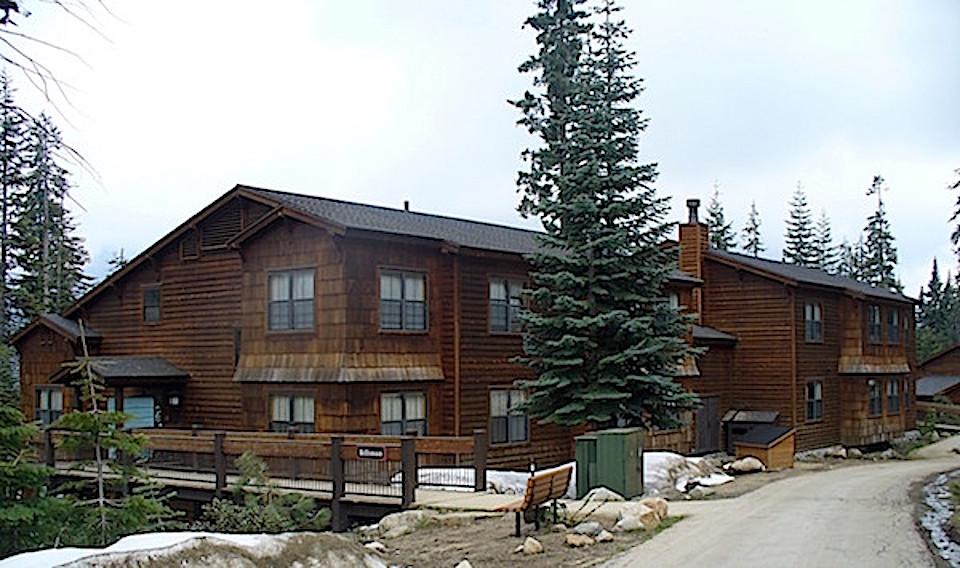
Wuksachi Lodge replaced the accommodations in Giant Forest at Sequoia National Park/David and Kay Scott
While the National Park Service is tasked with preservation, the Sequoia experience was evidence that changes do indeed occur. A number of major lodging changes have taken place in the national parks following our 1996 road trip. Some lodges have been constructed, while existing lodges have undergone major renovations. At the same time, several facilities have been razed, repurposed, or sit empty. This column is about lodging facilities that are only memories.
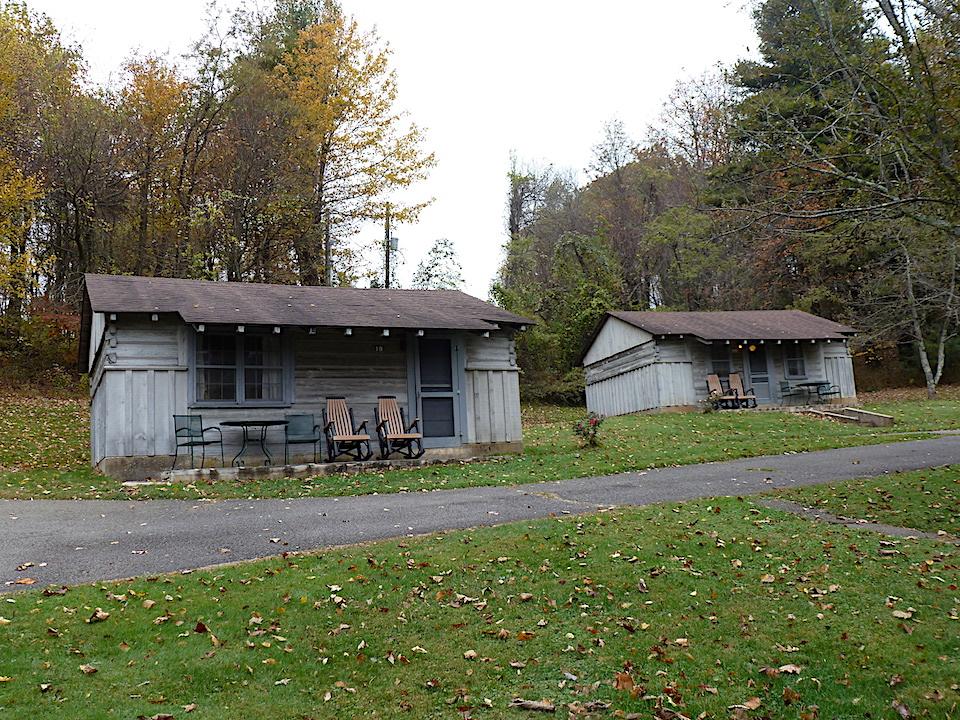
Rocky Knob cabins along the Blue Ridge Parkway, one of the authors' favorite stops/David and Kay Scott
National park lodges vanish for a number of reasons. Some are destroyed by fire or weather while others close due to financial or maintenance issues. A succession of lodges once welcomed guests in the Norris area of Yellowstone National Park. Now there are none. Only the dining hall/kitchen that currently serves as a camp store remains of Two Medicine Chalet that once welcomed guests in Glacier National Park.
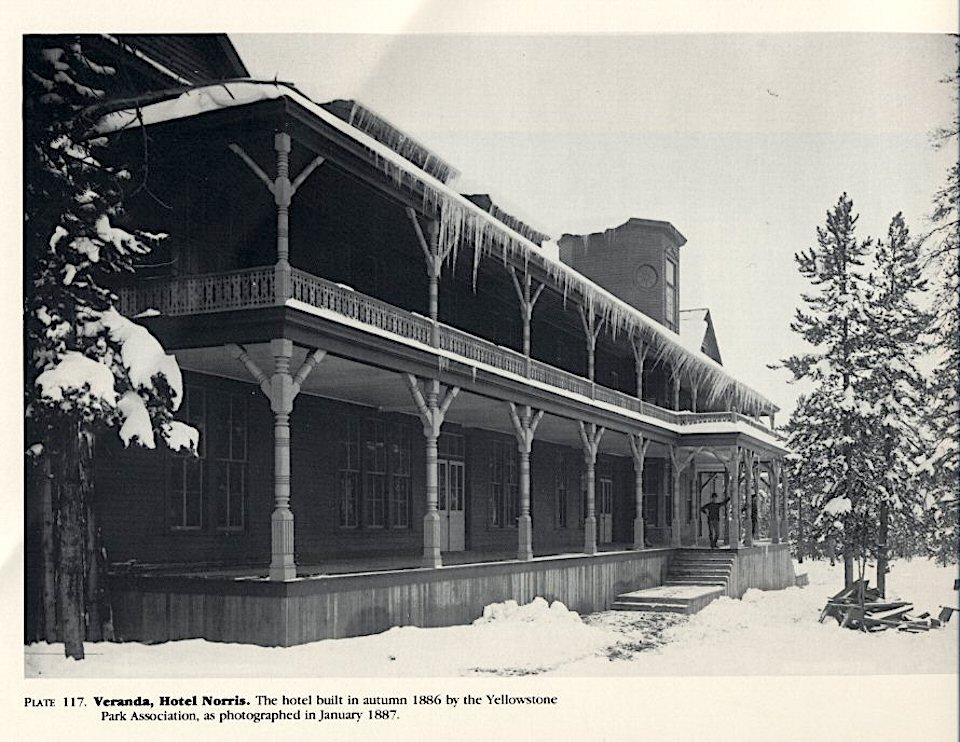
Several hotels once welcomed visitors to Norris in Yellowstone, including this one built in 1886/U.S. Public domain
Here are seven national park lodges that have been lost to visitors since our 1996 road trip. Others have undergone significant changes. For example, impressive new lodge buildings replaced many of the old cabins in the Canyon area of Yellowstone. All of the old cabins at Cedar Pass Lodge in Badlands National Park have been replaced with much nicer cabins. Likewise, much of lodging at Maswik South in the Grand Canyon is now utilized for employee housing. We plan to discuss new lodges and lodging that has undergone major changes in the next article.
- Giant Forest Lodge (Sequoia National Park, California) – Giant Forest Lodge had a total of 83 guest rooms – many dating from the 1920s and '30s - in one-story motel-type buildings and newer two-story lodge structures. The registration office, general store, and restaurant were across the road. The setting in a giant sequoia grove was perfect for visitors, but not the trees. Most of the facility was razed following the 1996 season. The old market building across the road was repurposed in 2001 as a museum and is the only remaining trace of the former lodging facility.
- Flamingo Lodge (Everglades National Park, Florida) – Flamingo Lodge consisted of a complex of two-story cement block motel buildings, plus multiple wooden cottages for a total of 126 guest rooms on Florida Bay at the southern tip of the park. A nearby building was home to a restaurant, café, and gift shop. The entire facility was in sad shape before being destroyed in 2005 by two major hurricanes. The cabins and motel buildings are gone and, although the NPS is interested in a replacement lodging facility, the effort has to date produced no results.
- Old Faithful Snow Lodge (Yellowstone National Park, Wyoming) – The Original Snow Lodge was an unattractive two-story stone building that opened in 1957. The first floor housed a dining room, cocktail lounge, and registration area for visitors staying in nearby cabins. Second-floor rooms were utilized as employee housing. In the early '70s second-floor rooms were converted into guest lodging for the park’s winter visitors. The original Snow Lodge was torn down in 1998 and replaced in a different location with a lodge of the same name.
- Bluffs Lodge (Blue Ridge Parkway, North Carolina) – Bluffs opened in 1949 with two two-story wooden buildings offering 24 guest rooms; it remained unchanged until the day it closed. The rooms were dated, but the lodge was one of our favorite places to stay. A classic coffee shop was within walking distance across the parkway. Bluffs' final season was in 2010 when the National Park Service was unable to locate a concessionaire. The lodge still stands and there is hope the coffee shop will be renovated and leased.
- Rocky Knob Cabins (Blue Ridge Parkway, Virginia) – The seven cabins at Rocky Knob were built in the 1930s by the Civilian Conservation Corps. Each cabin included a kitchen, but only one handicap accessible unit had a private bathroom. The rent was cheap and guests could take a short drive to Mabry Mill for morning biscuits topped with honey. The few rental units made it impossible for a concessionaire to make the facility profitable even when Mabry Mill was thrown in. The cabins closed within a year of the Bluffs closure.
- Echo Bay Resort (Lake Mead National Recreation Area, Nevada) – The two-story cement block motel was part of a marina complex on Lake Mead. The motel closed in 2010 following a major decline in overnight stays. The marina closed three years later when the NPS received no bids to operate the facility.
- Lake Mead Resort (Lake Mead National Recreation Ares, Nevada) – The resort consisted of three cement block buildings that opened in the early 1940s with 43 guest rooms on the west shore of Lake Mead. Declining lake levels caused the nearby marina to be moved several miles south, thereby dooming the lodging facility, which closed in 2009.
If you found this column rather depressing, stay tuned. Next we will discuss national park lodges that have debuted during the last couple of decades.
David and Kay Scott are authors of “Complete Guide to the National Park Lodges” (Globe Pequot). Visit them at mypages.valdosta.edu/dlscott/Scott.html
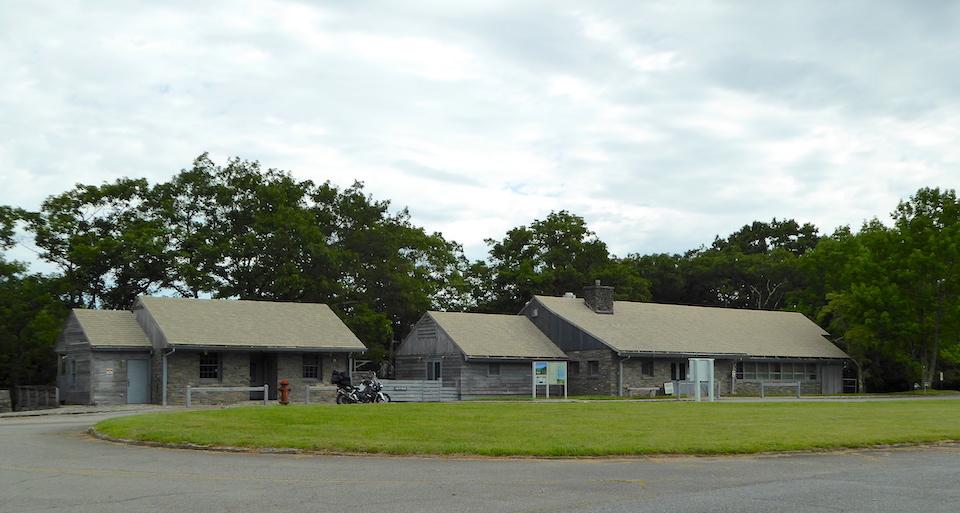
Bluffs service station and coffee shop/David and Kay Scot



Comments
LOVE your NP lodges books and the details are appreciated! Thanks
We appreciate the compliment. Thanks for taking time to write a note.
As your photo shows, what they had at Giant Forest were actually rustic cabins. Motel-style might even be generous. I remember ours had a free-standing cabinet on the front porch and a stove for heat I believe, although it could have been propane.
We had an unfortunate run-in with a bear. My mom was totally freaked out about the recommendation to store food inside the cabin, so she stored some in that cabinet, even though that clearly made no sense if the idea was to keep it away from bears. But she was more worried about keeping the bears away from us. So later we heard yelling as people were trying to scare off a bear, then our flashlights pointed in the distance lighting a bear with a bag of likely our Wonder Bread handing from its mouth. We came back to find that the bear had slashed open the cabinet door. A handyman came by the next day and did some repairs where it still looked like it had been damaged by a bear, but strangely enough we weren't asked to pay for it nor were we fined for improper food storage. But this was the late 70s and I think by the 80s they were getting stricter.
Here are a couple of more National Parks/Monuments where cabins have disappeared: Crater Lake and Oregon Caves. The former had cabins up near the more elegant lodge back in the 1970's. They were razed to expand other facilities but were such a bargain in the day---about $5 a night, with a bed and sink , a communal bath/shower house and toilets. Apparently the fact that they were historical landmarks was "overlooked" by the Park Service until after they were demolished. The cabins at the Caves actually were on area that was over some of the cave itself and there were issues with them being in such an environmentally sensitive area. Like the Crater Lake ones, they were pretty rustic and also inexpensive. I think they were demolished in the 1980s or later as they did really have impact on the Cave itself. Unfortunately I was too young and broke to think about taking photos of these cabins at the time---film (remember that stuff??!) was expensive as was developing it. Years later with little bigger wallet available we got to stay at the lodge buildings at both parks --- a promise I had made to my younger self fulfilled!
Love your book, I have several editions. Use them all the time when we book stays at the Parks. Thanks for the good work and for sharing with the rest of us! Cheers!
Thanks for the note. I should mention that we forgot to include the lodging that was once in the Manzanita area of Lassen Volcanic National Park in California. We only remember them from the early years of camping. They were gone by the time we wrote the first edition of the book. As we remember, they were taken out because of the potential danger of a rock slide. I believe there was some controversy about the removal.
I guess what often upsets me as someone budget conscious is that often what's removed is budget lodging. Then the replacements are always more expensive.
There's a lot of controversy over camping in Yosemite because the River campgrounds were never replaced after the floods in the mid 90s. They were supposedly about 40% of the available campsites in Yosemite Valley.
There used to be a lodge at Cedar Breaks National Monument.
You are absolutely correct about the cabins at Manzanita Lake! I have an old postcard somewhere that shows them. They were closed up by the time of my first of many visits to Lassen back in the early 1970's. I have camped all over the Park and routinely stayed at Drakesbad, becoming friends with the old managers as well as meeting some of the Sifford family there. There is a new concessionaire up there for the all facilities this year so it will be interesting to see how the facilities fare with the change. At least the old management did not "copyright" the names, etc., as some other companies did elsewhere...
I knew one of the old Head Rangers up there (Les Bodine) and he shared that there was indeed controversy but the Park Service decided that it was in a high hazard area, whatever that means. After all the whole park is full of geothermal activities so anywhere there is potential for a problem.
You two do such a great job with your books--- I am sure that it is fun to visit all the spots but also it takes a lot of work to get all the info out on paper. I find the information you share invaluable and fun to read! Thank you and keep up the good work! Kind regards, Eileen K